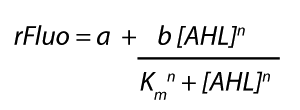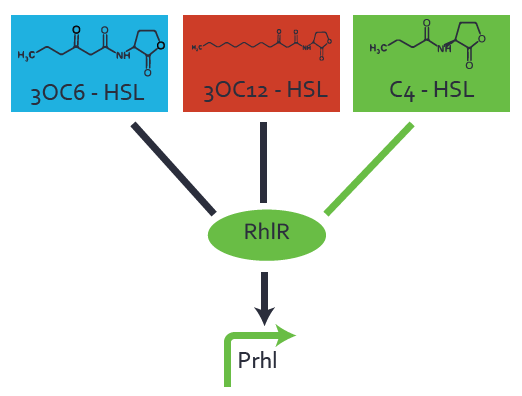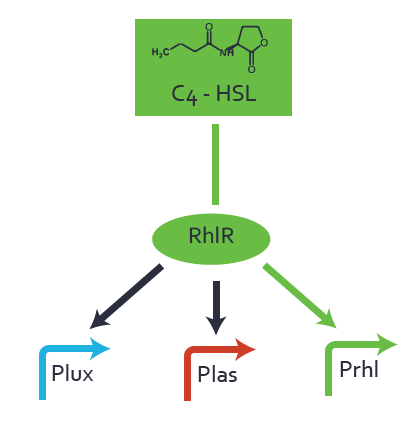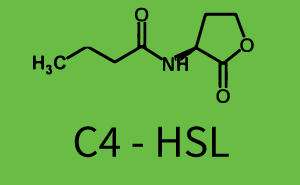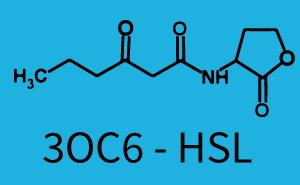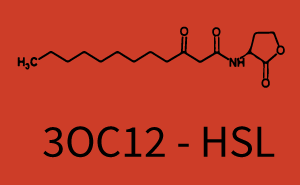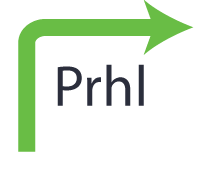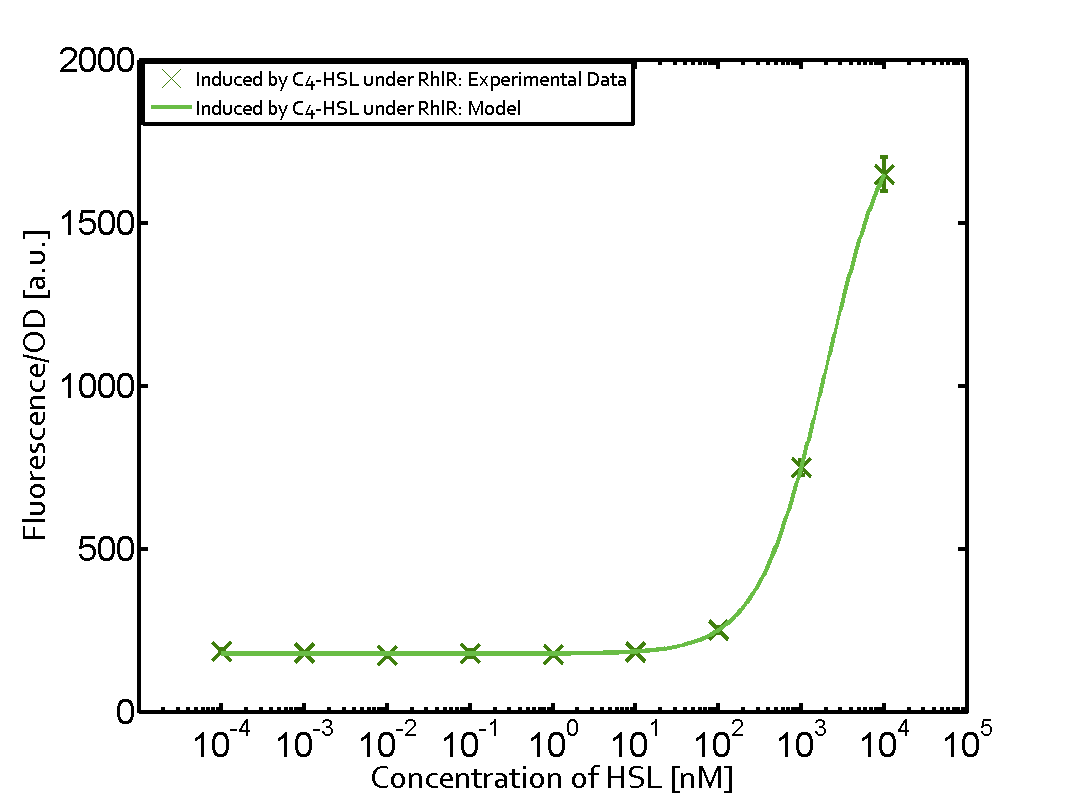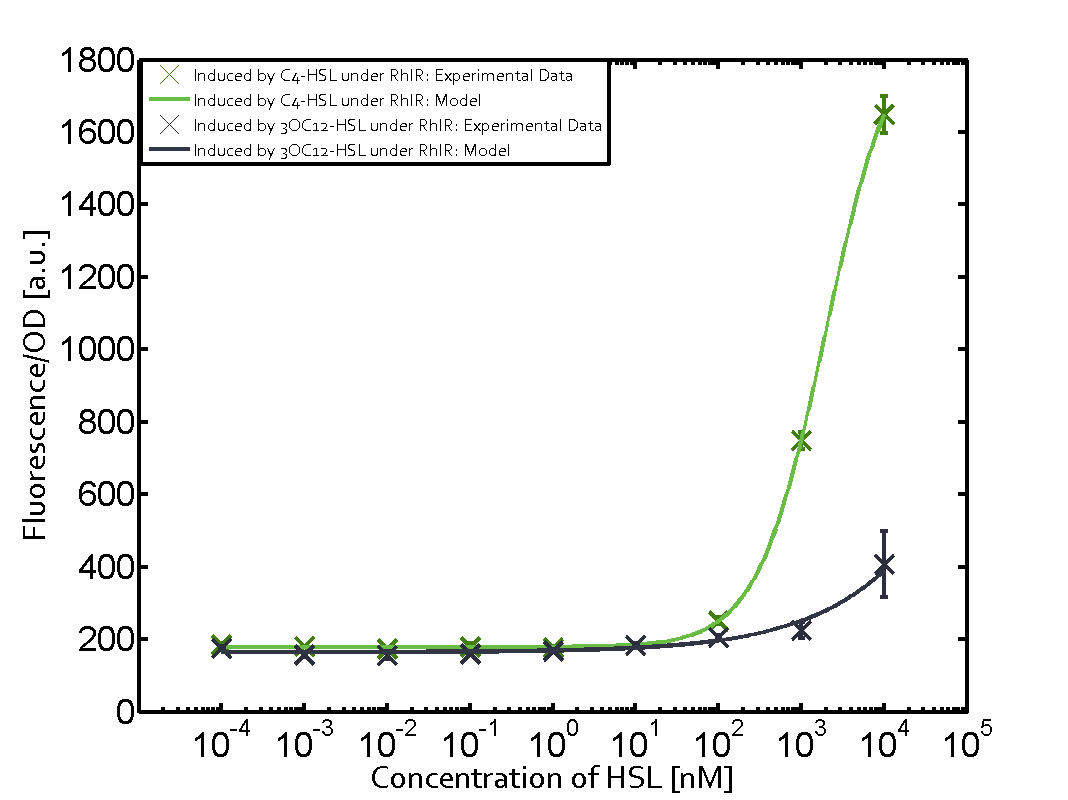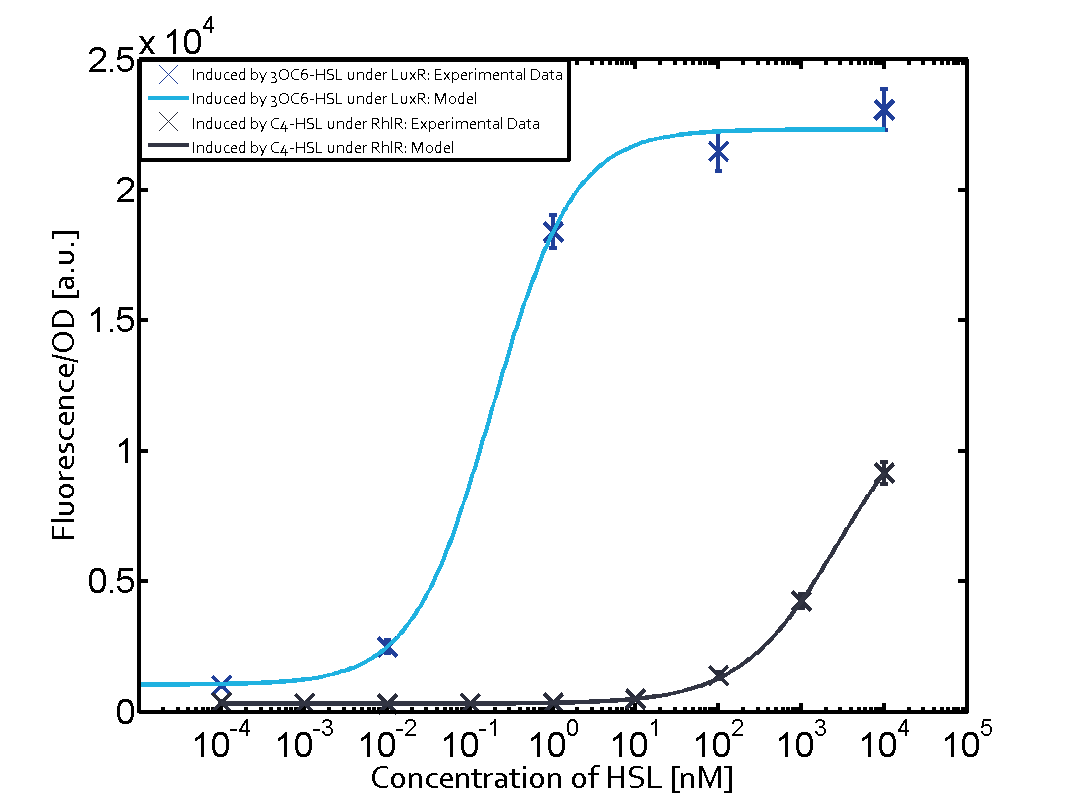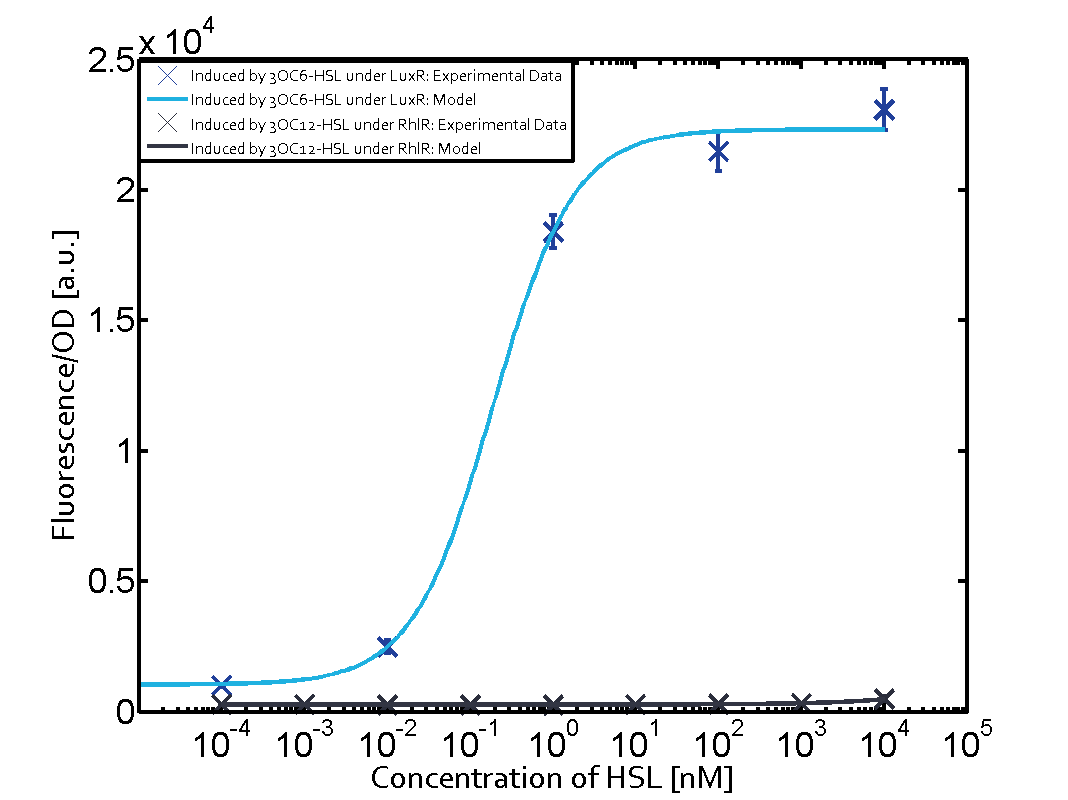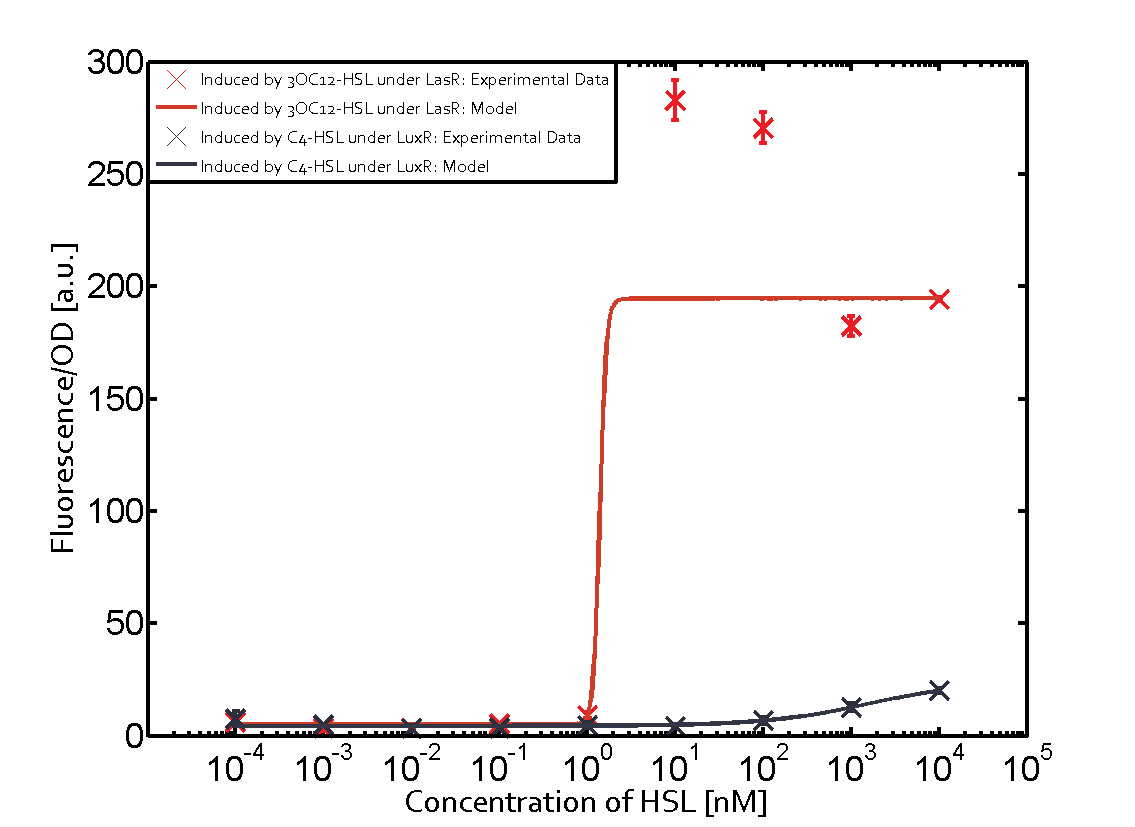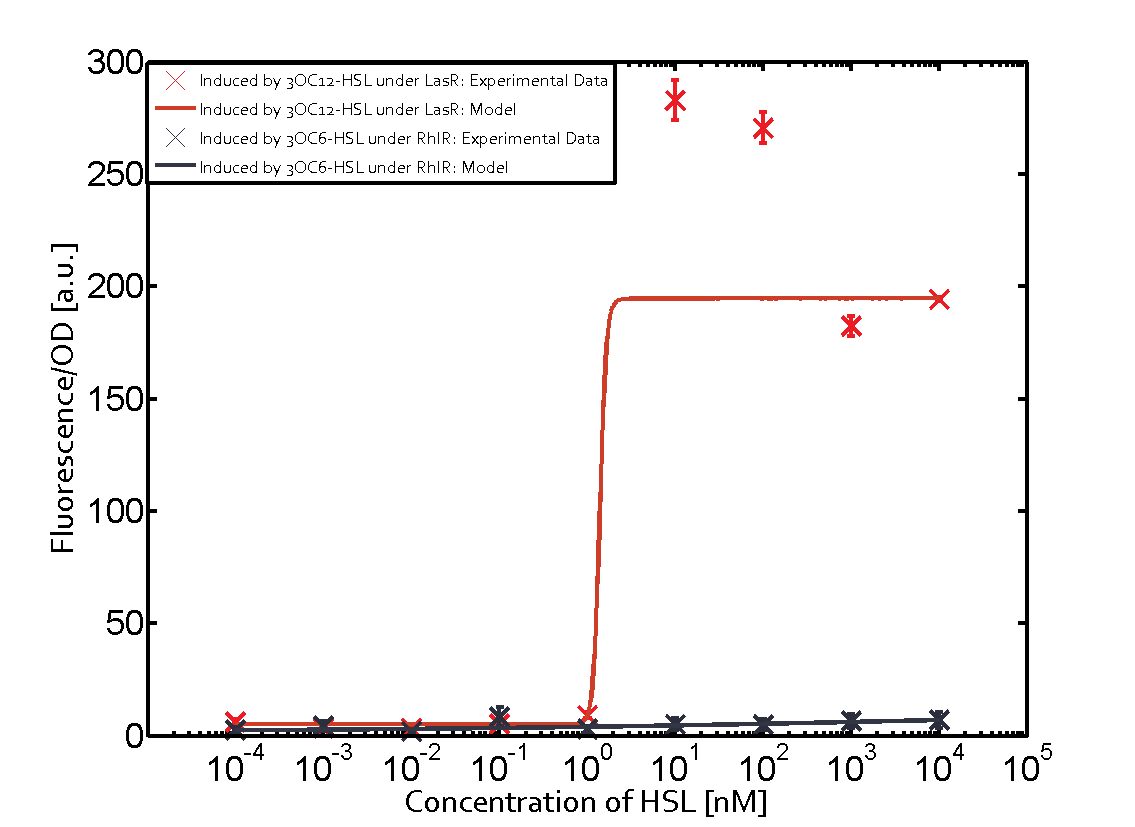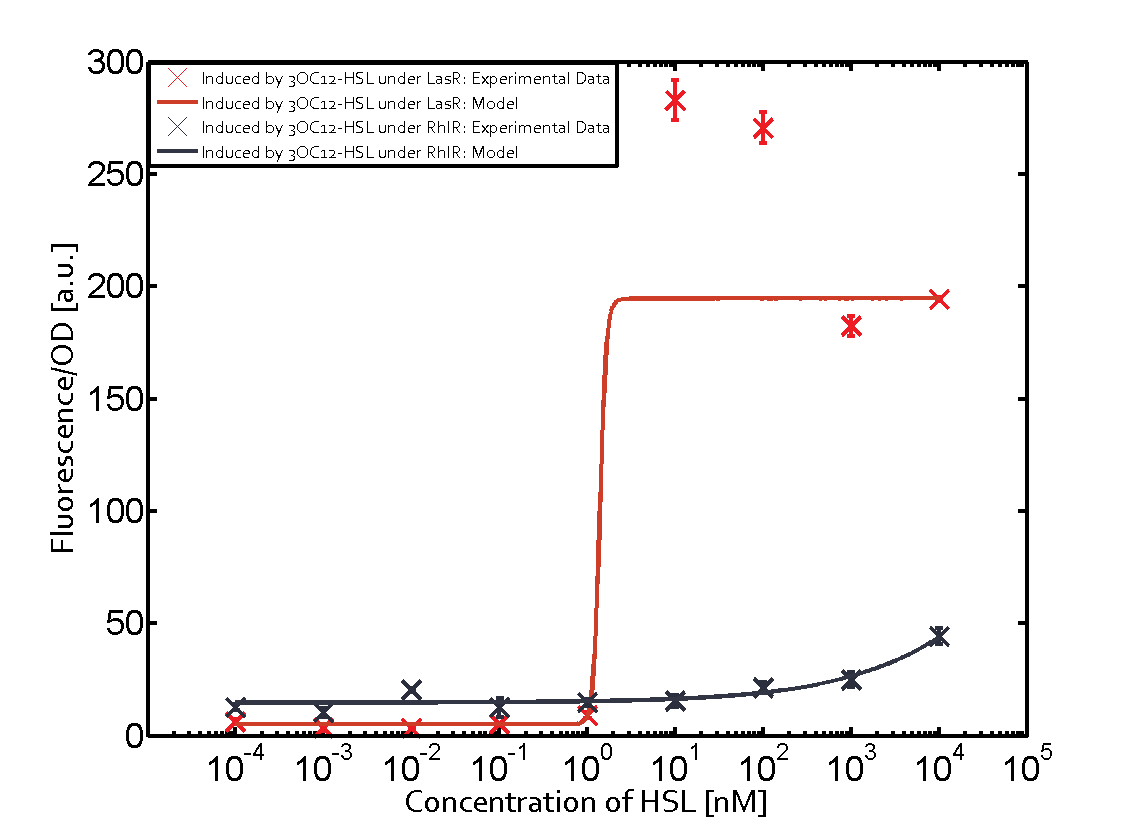Difference between revisions of "Part:BBa C0171:Experience"
(→Modeling crosstalk) |
(→Modeling crosstalk) |
||
| Line 47: | Line 47: | ||
{| border="1" class="wikitable" style="margin: 1em auto 1em auto;text-align:center;" | {| border="1" class="wikitable" style="margin: 1em auto 1em auto;text-align:center;" | ||
| − | |+ Parameters of HillFunction for crosstalk with RhlR | + | |+ Parameters of HillFunction for crosstalk with RhlR (with 95% confidence bounds) |
! | ! | ||
! C4-HSL | ! C4-HSL | ||
Revision as of 11:28, 24 October 2014
This experience page is provided so that any user may enter their experience using this part.
Please enter
how you used this part and how it worked out.
Applications of BBa_C0171
User Reviews
UNIQ4c523916a625cab9-partinfo-00000000-QINU
|
••••
ETH Zurich 2014 |
Characterization of two-order crosstalk on the promoterBackground informationSystem consideredModeling crosstalkEach experimental data set was fitted to an Hill function using the Least Absolute Residual method. The fitting of the graphs was performed using the following equation :
First-order crosstalkFirst Level crosstalk: RhlR binds to different HSL and activates the promoterSecond Level crosstalk: other regulatory proteins, like LuxR, bind to their natural HSL substrate and activates the promoterSecond order crosstalk: Combination of both cross-talk levelsResults
| ||||||||||||||||||||||||||||||||||||
|
Antiquity |
This review comes from the old result system and indicates that this part did not work in some test. |
UNIQ4c523916a625cab9-partinfo-00000003-QINU
|
No review score entered. Northwestern 2011 |
The 2011 Northwestern iGEM team used this part as a part of our Pseudomonas Aeruginosa biosensor. We were able to successfully express LasR (C0171) continuously in our system. BBa K575024 |

